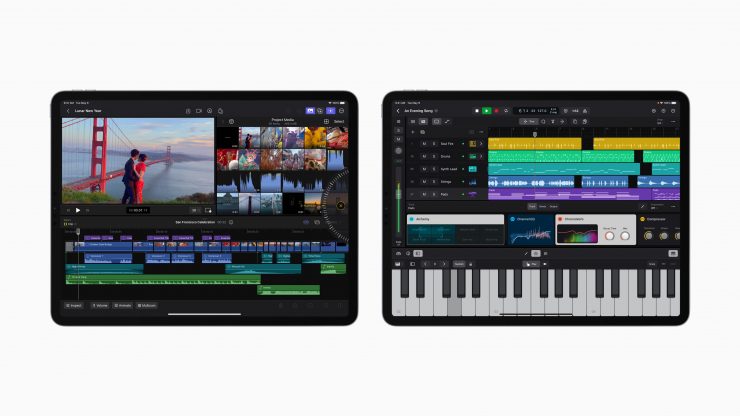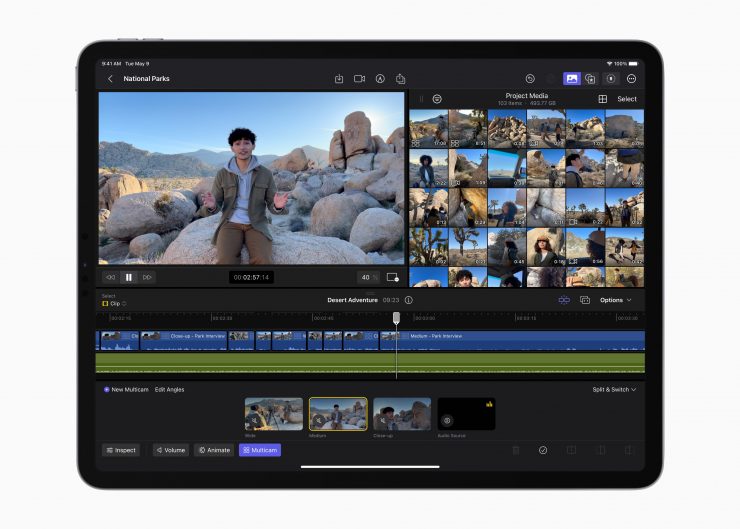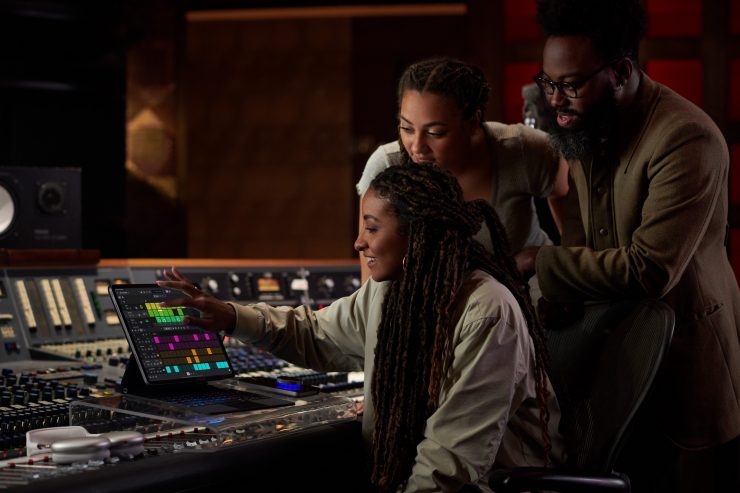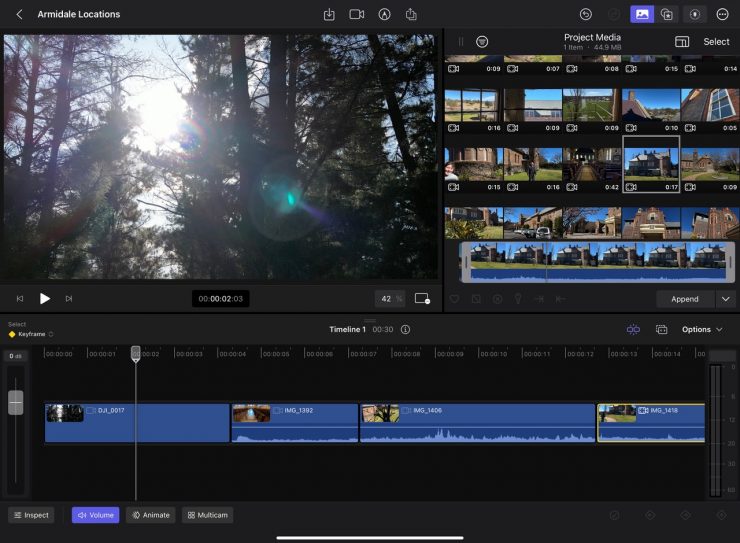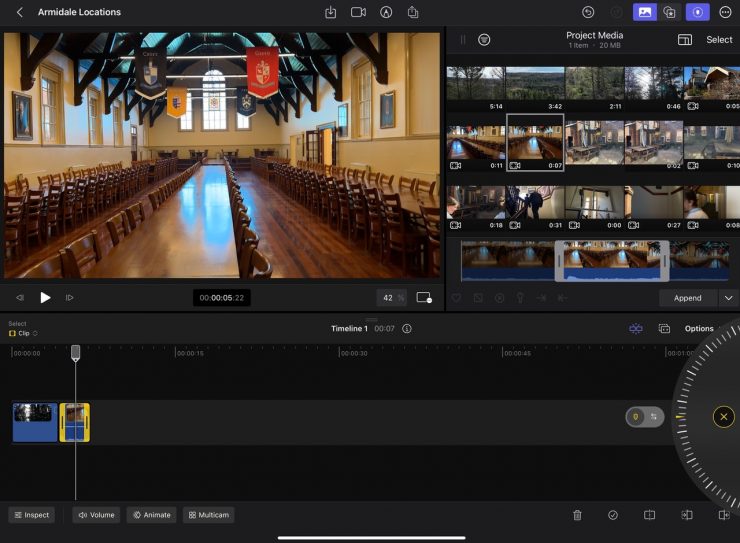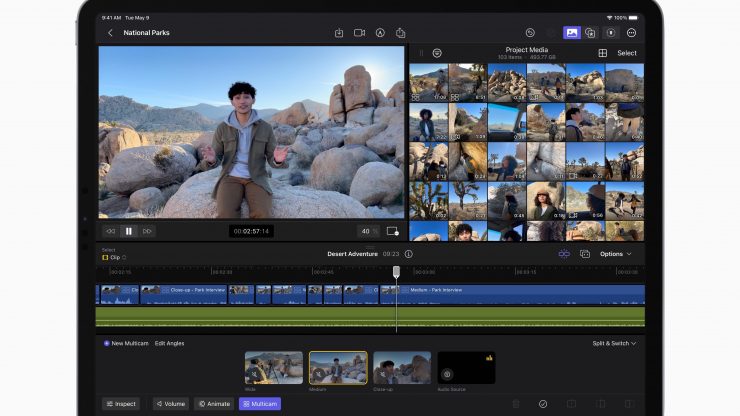
In one sense it was inevitable that Apple’s flagship pro apps, Final Cut Pro and Logic Pro, would eventually make their way onto the iPad. Other editing and music apps have had success on the device for years and as the hardware has become increasingly powerful, the appeal of bringing the flexibility of the professional tools to the extremely portable and self-contained tablet system has been increasingly clear. In fact, to many observers the question was not “why” but “why did it take so long?”
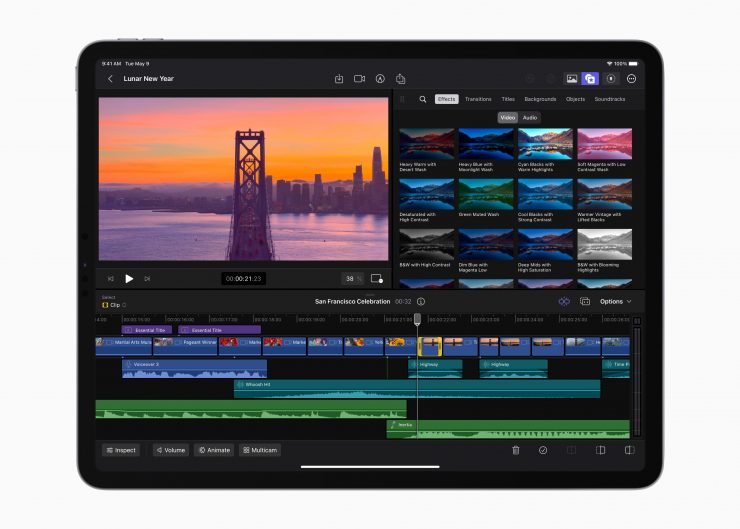
The answer to this question becomes quite obvious when you look at Apple as a whole. Their dominant position at the premium end of so many different market segments allows them to do something very few tech companies can do to the same extent… they can choose to play the long game.
So the announcement of Final Cut Pro and Logic Pro arriving on the iPad was as much a surprise milestone as it was a destination that feels like it has been sitting just beyond the horizon for a long time.
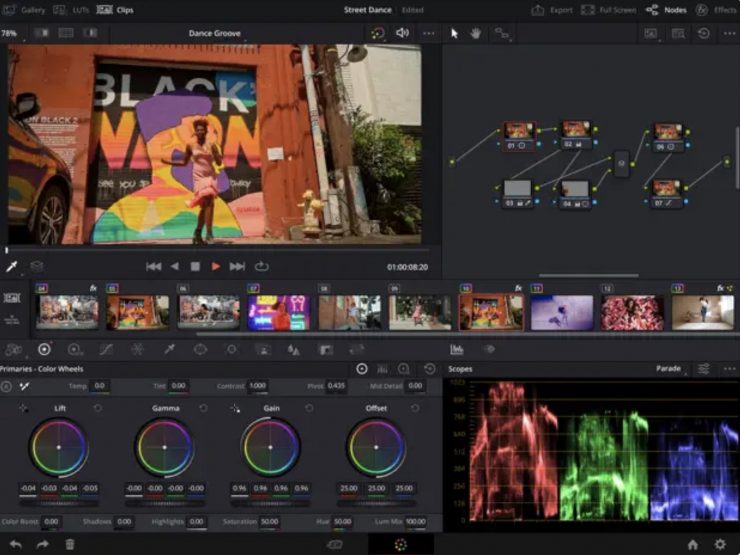
The other context, particularly for FCP is the recent arrival of DaVinci Resolve on the iPad as well. Together, these two releases reflect where the iPad hardware has arrived with the “M” series Apple silicon. The M1 and now the M2 processors have been such a big leap forward for video work because of the way that they combine high powered CPU and GPU processing with shared memory and low power and heat. There are few things that leverage all of these factors to the extent that editing and processing high resolution video does.
Having been using Final Cut Pro since version 1, I’m very conscious of how the application has evolved and its changing place in the film & video world over the last two decades. The radical change that Final Cut Pro brought to video editing when it was first released is hard to put into perspective now. At the time, I had been using Avid Media Composer and Media 100 at facilities but the cost of these systems meant that they were something that needed to be rented by the hour for most production companies. I had successfully put together a single, 30 second TV commercial entirely in Adobe After Effects, but that was an extremely slow and laborious process back then!
The arrival of FCP also coincided with the DV videotape format and while DV was originally intended as a consumer format, the quality far exceeded expectations. The combination of being able to record digital video at resolution previously only available on “broadcast” equipment and then send it via the Firewire connection to a Mac running FCP instantly and completely changed what was possible for small production companies, advertising agencies, video artists and film students around the world.
Levels of quality, speed and creative flexibility were suddenly accessible to a lot of people who then used them to create new content that they would not have otherwise been able to create or would not have been able to do at anywhere near the same quality.
For me, it meant I was able to do short films on 35mm film (shooting on short ends), transfer to DV tape and then edit in FCP.
In 2001, FCP V3 came out with the 3-way Color Corrector which enabled both primary and secondary color corrections within the edit timeline. In early 2002 I color graded the TV film ALBERT’S CHOOK TRACTOR in the uncompressed FCP suite owned by the production company. Despite the limitations and slow render times, it was such a creatively liberating process to be able to spend time on the grade with the director. Where the budget had allowed for only 4 hours in a conventional suite to do a very quick grade, the director and I were able to spend 3 whole days experimenting and fine-tuning the look. The end result brought me a silver at the ACS Awards that year.
It was this capacity to spend time being creative, that made FCP such a breakthrough for me and so many filmmakers over the coming years. FCP continued to develop, adding support for newer camera formats and higher resolutions and eventually expanding into the Final Cut Studio suite of applications, but the basic design and functionality of the software was essentially the same and FCP V1 and V7 would have looked largely the same at a glance.
Of course, Final Cut Pro X was the dramatic plot twist in the FCP story. The reality for Apple was that they had a 32-bit application with its design roots in the 1990’s and the future required moving to a 64-bit software architecture and therefore, rebuilding the application from the ground up. It is an interesting cultural characteristic of Apple as a company that they aren’t afraid to make big changes when they believe the time is right, even if their customers haven’t realized it yet. I’m thinking of switching to USB, getting rid of floppy disc drives, getting rid of CD-ROM drives, etc. I vividly remember in each of these cases people being shocked at the time but looking back, these were more like ripping the band-aid off quickly and then moving on and now seem like very straightforward and necessary progressions.
The development of FCP X came as a similar shock for many users, especially for those who had spent years with FCP’s interface and had built systems or even whole businesses around it. But again, Apple was taking the opportunity to rethink video editing from the ground up and many of the design cues and features have slowly trickled into other editing software and accepted as normal by the industry.
The new interface also laid the groundwork for editing to be done more easily on smaller screens as smaller MacBooks became powerful enough to do realistic editing work. Looking back, this also had the foundations for an editing app that would work on a touchscreen device. The iPad had only been introduced a year earlier and at that stage had nowhere near enough power to do serious video editing, but Moore’s Law of increasing computing power certainly meant that an iPad capable of professional video editing was coming.
As Apple worked away at upgrading FCP X with the features and functions that professional editors were demanding in order to make it fit within the larger professional workflows and environments, the iPad kept making big leaps forward in processing power. This led many editors to speculate on when rather than if FCP would arrive on the iPad. Without actually knowing what dictated the timing, I suspect that heat played a big part. Having done a lot of editing on laptops over many years, I’m very conscious of how much heat they used to produce. I’ve spent many hours in quiet hotel rooms editing with a laptop’s fans whirring away at full power while the surface of the device was still quite hot to touch!
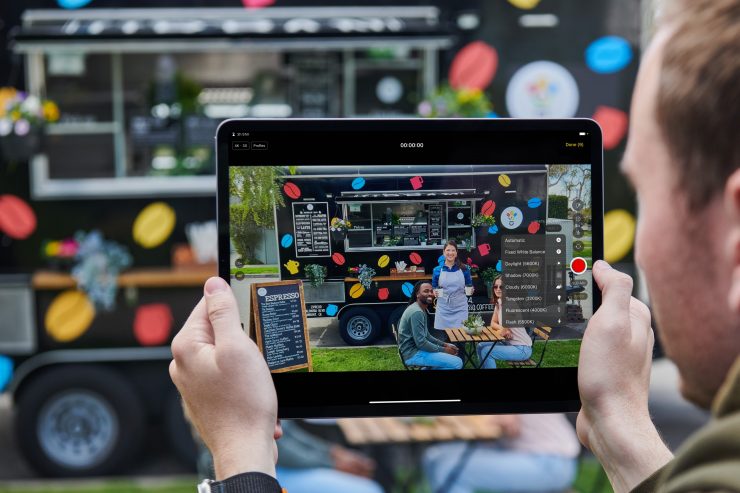
One of the remarkable things about Apple’s M series silicon is the amount of processing power it can produce without the device getting hot and in the form factor of the iPad, this is absolutely critical in making it possible to edit without the device becoming uncomfortable to touch. I still find it baffling that the iPad is now capable of doing the heavy lifting required by serious video editing while remaining completely cool in your hands.
Another thing that has changed over the years is that Apple is now a major camera manufacturer. Because they don’t look like cameras, it’s easy to forget that the iPhone and iPad are now among the world’s most popular video cameras, and with each new iteration, they have become increasingly capable of more professional results. TV networks, including prestige legacy ones like the BBC, think nothing of broadcasting entire news & current affairs stories shot with an iPhone camera. In a similar way, Apple has also become a leading video monitor manufacturer but as with the cameras, because these monitors come built into a phone, tablet or laptop, it’s easy to forget that they are formidable displays in their own right. The results of being precisely calibrated before being installed in the devices have produced a level of accuracy and consistency across millions of devices that post facilities used to dream of, even between a couple of grading rooms.
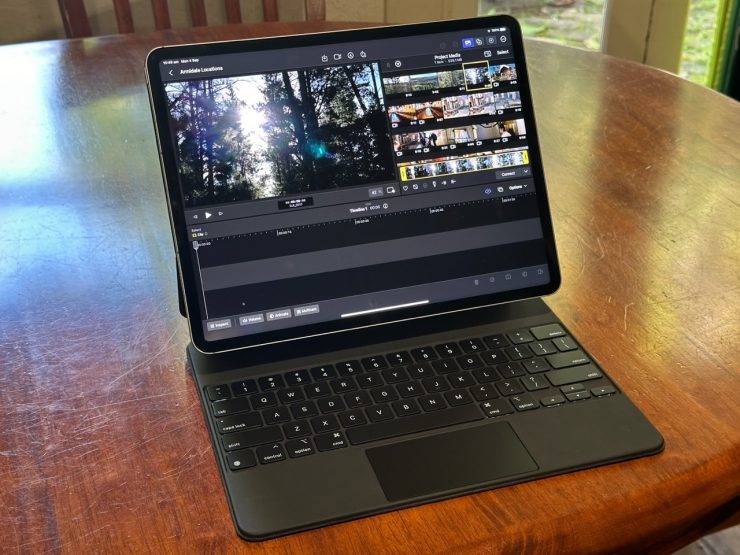
As all of these threads have come together, the powerful processing & heat management, the high-quality displays and the built-in cameras along with FCP X having settled into its own sizeable niche in the industry seems to have made it the right time to bring the application to the iPad. The technical requirements of the application are reflected in the fact that it requires a 3rd generation or later of the 11-inch or the 5th generation or later of the 12.9-inch iPad Pro or the 5th generation iPad Air to run.
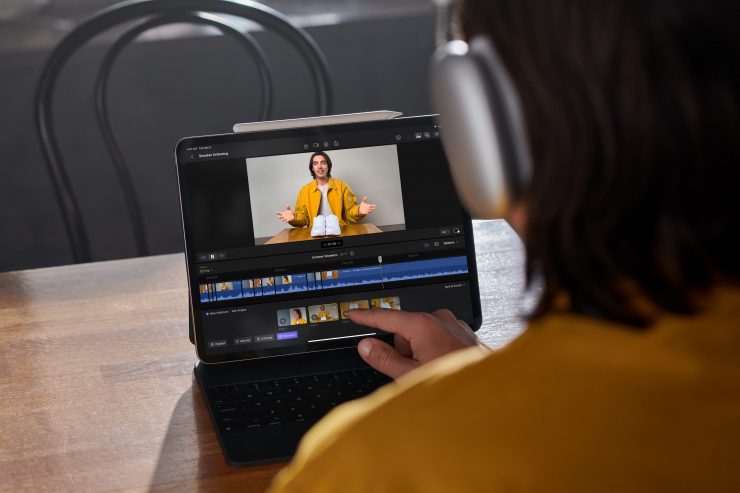
The big advantage that FCP has had since the introduction of the X interface is speed. The major rethink of how editing could be done more efficiently gave FCP a big advantage in being able to very quickly find shots, put an edit together, and rapidly fine-tune it. This advantage has made its way comfortably to the iPad version with the uncluttered interface giving access to the main controls. As with the desktop version, this sometimes means that you need to dig a little deeper for advanced controls, but the payoff is a system that is very effective at its essential tasks while still having access to powerful professional tools.
While it is possible to do everything with just the touchscreen interface, I have found that for me, the Magic Keyboard makes a big difference particularly because it makes it possible to use the traditional JKL keys for playback control, left & right arrows for frame by frame movement and the IO keys for making edit points. Beyond this, it is great to be able to reach out and actually “touch” the edit to make intuitive changes. The closest analogy to this that I can think of is handling actual film.
The on-screen jog wheel is a great innovation, making it practical to get very fine control of timing in a way that is both quick and intuitive. I find that I tend to grab the playhead directly to jump to the general area I want to adjust and then use the jog wheel to get to the exact frame.
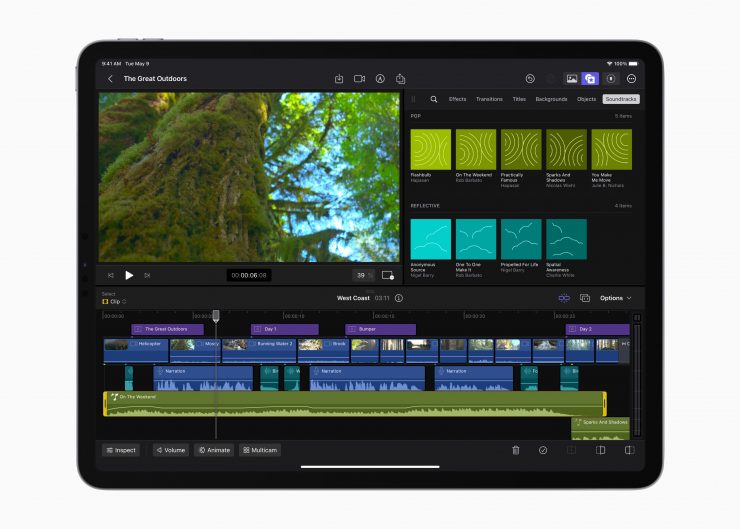
In a similar way, the volume fader takes a control method dating back to the days of analog editing and brings it into the touchscreen world in a very effective way.
Another interesting choice that the designers have made with the iPad version is that it doesn’t exactly copy the desktop version. In fact, the video monitor part of the interface and the media browser have been swapped around. Without knowing if there was any other reason for this, I’m finding it a helpful, mostly unconscious reminder of which version I’m using… helpful in remembering not to try and use a desktop’s monitor as a touchscreen!
One thing to keep in mind is the media storage. While the app and the iPad hardware are very capable of handling 4K ProRes, FCP requires footage to be imported into the project file which has to be stored locally on the iPad. While the iPad Pro is available with up to 2 TB of storage, if you use iCloud backups you can easily end up with big video files filling up your iCloud storage and clogging up your internet connection. One option is to go into the iCloud settings and turn off Final Cut Pro as being included in the backups. Obviously, it then becomes critical to manually backup your projects, for example to an external SSD drive.
All in all, it is a very capable editing environment that really lives up to the Final Cut Pro name. This, however, begs the question of where this fits for professional users?
I’ve had a couple of different use cases pop up, that have really made me think differently about this question.
I was recently doing location scouting in Northern NSW to look at the region’s viability for an upcoming project. In pondering which camera(s) to use, I ended up deciding that what I really needed was my iPhone (14 Pro Max) and a drone (DJI Mini 3 Pro). With the drone in a Lowepro backpack, it was easy to add the 12.9” iPad Pro and with all the bits and pieces I needed the total weight was an effortless 3.9 kg… most of which was the backpack itself.
The iPhone was ideal for this because the combination of the very effective stabilization and Cinematic mode made it easy to explore shots and angles while recording different perspectives on the locations. Shooting in 4K also made it possible to look back at the footage and closely inspect details that could be potential issues for the production.
DJI’s Mini 3 Pro is also a great partner in the sky for the iPhone camera. It’s very easy to match the two, and the 4K images from this tiny little drone continue to blow my mind. The RC controller with its own built-in display means it’s up and running very quickly and doesn’t take over my iPhone while I’m flying.
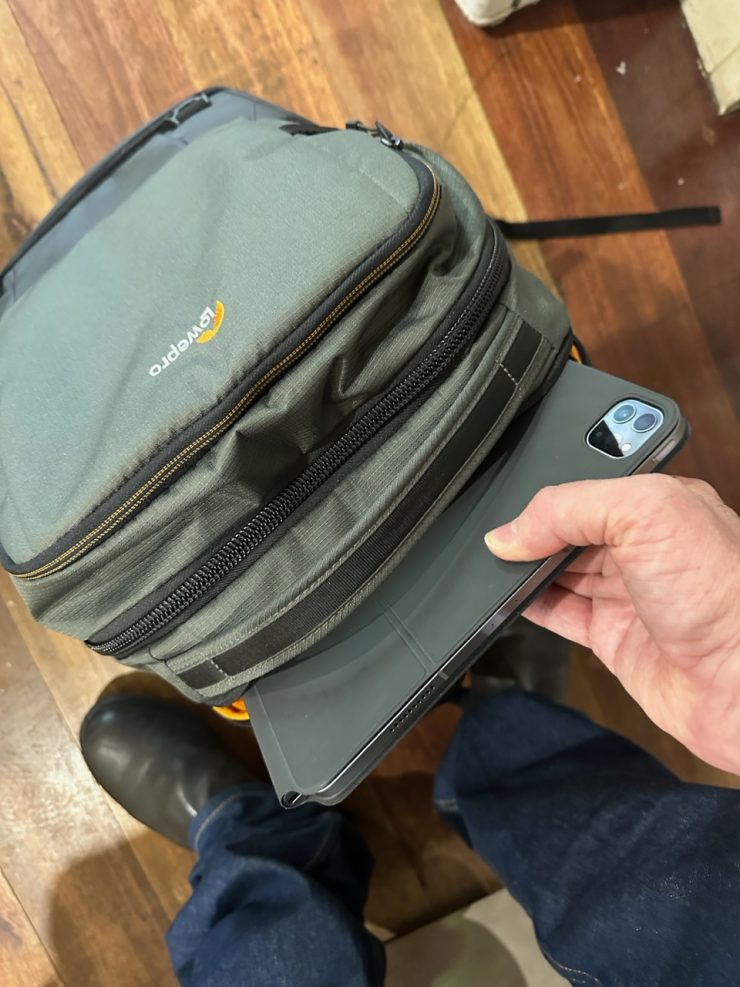
Between the phone in my pocket and the drone in my backpack, there were virtually no angles or ideas I couldn’t try out quickly and easily. But where it got very interesting was when I pulled the iPad out of the backpack. The iPhone footage synced over iCloud and could be easily imported into FCP and the drone footage was an easy import via a USB-C micro SD card reader. To be able to take drone footage directly into the iPad and check it back on the XDR Liquid Retina display while still in an isolated forest location is an incredible level of freedom. I could easily imagine doing this in all sorts of locations without even returning to the car the way I did on this occasion.
On this particular trip, I did also take my MacBook Pro, but it didn’t leave the AirBnB we were staying in and even when we were back there, I didn’t bother transferring the material to the MacBook Pro because it was so easy and comfortable to keep working and reviewing the footage on the iPad. Unless I needed non-iPad apps like Movie Magic Budgeting, it would be completely viable to do this sort of location scouting trip without the laptop entirely. For me, this answered one big part of the question of where FCP for iPad fits. The difference between carrying around an iPad, even the large 12.9” with the Magic Keyboard, and a laptop is inescapably significant. For locations where we knew we weren’t going to use the drone, I simply put the iPad in a messenger bag over my shoulder and the whole thing was even easier. It means there’s really no reason to not have it with me. To know that in a couple of seconds, I can be comparing what I’ve just shot with an alternative from a different location on a big, clear screen is wonderfully efficient and the fact that it is so easy to carry around is what makes it work.
For travel that involves flying, this would be even more significant.
The second use case is one that I actually stumbled onto and in many ways it gave me a bigger insight into FCP for iPad and the evolution of FCP itself.
The story begins on a quiet Saturday evening when my wife and creative partner Clara had gone out to dinner to catch up with some friends and I was at home with the kids. My 14-year-old son and 9-year-old daughter came to me and said that they wanted to make a movie to show mum when she got home and asked if I could help. What a treat for a film-making father! They came up with the story and worked out the blocking and as they were both in the action, it was up to me to shoot it (except for one shot). I did the camera operating and helped work out the angles as well as adjusting the available light. The rest was done by them. Of course, I could have dragged out the URSA 12K or even the ARRI ALEXA, but this was a bit of fun with the kids and in Cinematic mode, it was easy to be very relaxed and intuitive with the shooting process by using the iPhone. My 9-year-old was very keen to do the editing, so I realized this would be a great opportunity to see how she responded to FCP on the iPad.
Like many, if not most kids of her generation, multi-touch on the iPad is probably her first language. Her school teaches editing in iMovie from kindergarten and she regularly edits little videos with her friends using CapCut.
The moment of revelation for me came when she started to edit the video together with virtually no instruction or help and entirely using the touch screen. This is another aspect of Apple being able to play the long game on a scale that sometimes reaches across generations. The combination of the design and interface consistency across Apple’s products, the intuitive nature of touch screen and the millions around the world who have or are growing up with this technology, just as my kids are, means that the initial learning curve on FCP on the iPad is almost non-existent.
The implications of this are potentially huge for the film industry, for film education, and also for jobs that aren’t full-time video editing but require videos to be created from time to time. The reason is that while putting an edit together and applying some effects etc. are so easy to figure out, the more advanced features of FCP are a gateway to a broader and deeper range of skills that are suddenly only a small step away from the skills and knowledge these users already have.
This is the broader significance of bringing FCP to the iPad in the way that they have done it. FCP on the iPad is doing now for the basic skills of professional editing, what Final Cut Pro originally did for the cost, which is drastically lowering the traditional barriers to entry and opening it up to a much broader pool of talent. That’s a long game worth playing.

